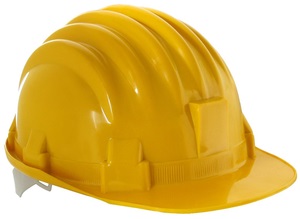The company says that its Smart Helmet will be helpful for workers in a range of different industrial ecosystems.
The latest unveiling from Daqri, in its ongoing tradition of forward thinking and providing special features for which its customers will be willing to pay a premium price, has been a unique type of augmented reality helmet.
This strategy takes the company in the exact opposite direction from the rest of the sector.
The majority of companies in this area focus more on ensuring the lowest possible price in order to stand out. Daqri has decided to look for incredible features that will be attractive to its customers and worth the money that they pay. The company is a startup based in Los Angeles and it has now unveiled an augmented reality hardhat that it feels will be highly attractive to industrial employers who are seeking to improve the ability of their workers to do their jobs accurately and efficiently.
Daqri is betting that those employers will be willing to spend in order to obtain these high quality augmented reality features.
 The Smart Helmet looks like a traditional hard hat that has travelled to the future. It is built to include a transparent visor as well as special lenses to provide it with a kind of heads up display (HUD). Also built into this protective equipment is a series of sensors and cameras that give users the ability to gather and access a considerable amount of information about his or her present environment.
The Smart Helmet looks like a traditional hard hat that has travelled to the future. It is built to include a transparent visor as well as special lenses to provide it with a kind of heads up display (HUD). Also built into this protective equipment is a series of sensors and cameras that give users the ability to gather and access a considerable amount of information about his or her present environment.
Daqri has already been selling software that gives businesses the ability to incorporate AR technology into their functions. This type of application will usually involve the use of a smartphone, so that the camera can be directed at trigger image which will then bring the broader function “to life”. For example, if the trigger was worked into a magazine ad, then viewing it through a smartphone could cause a video to play. An instruction manual could offer audio or video instructions to enhance the text and diagrams.
This latest product, however, would build the augmented reality experience right into the helmet and would broaden its capabilities quite a bit.

